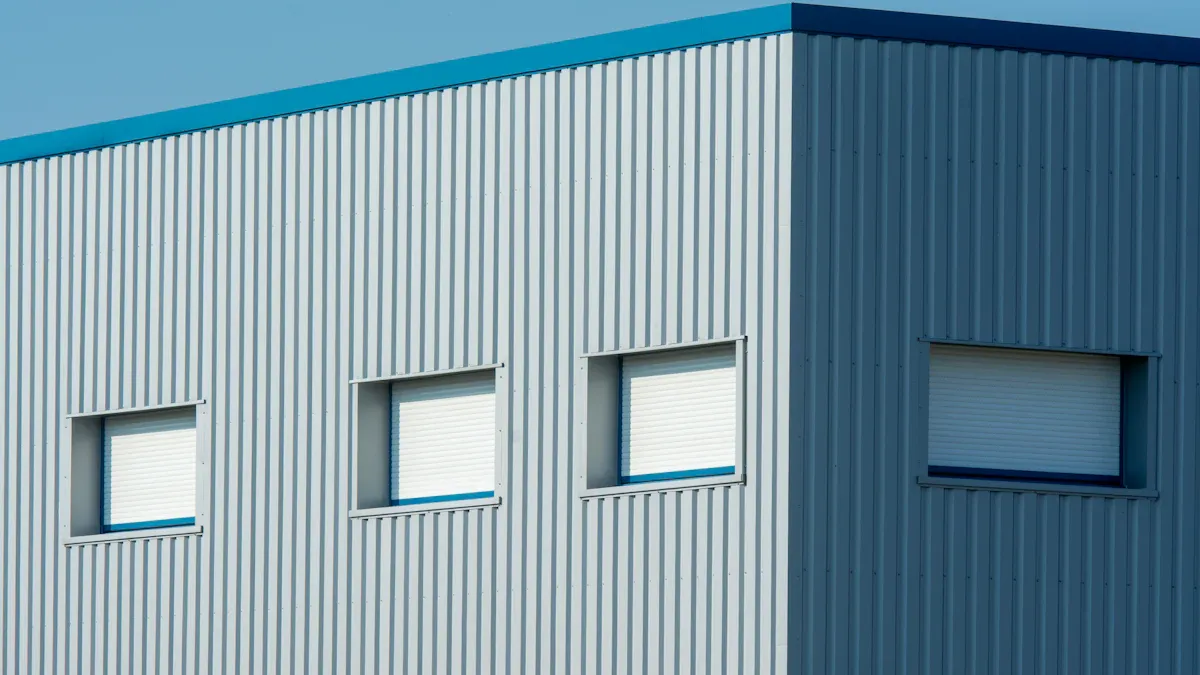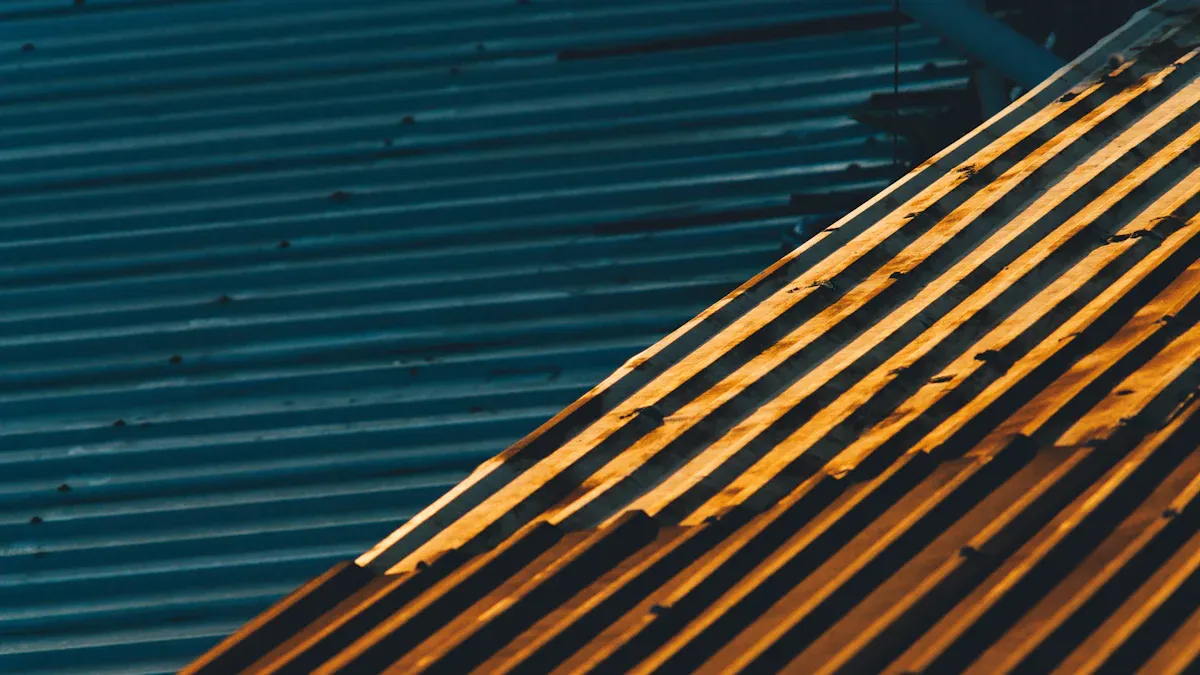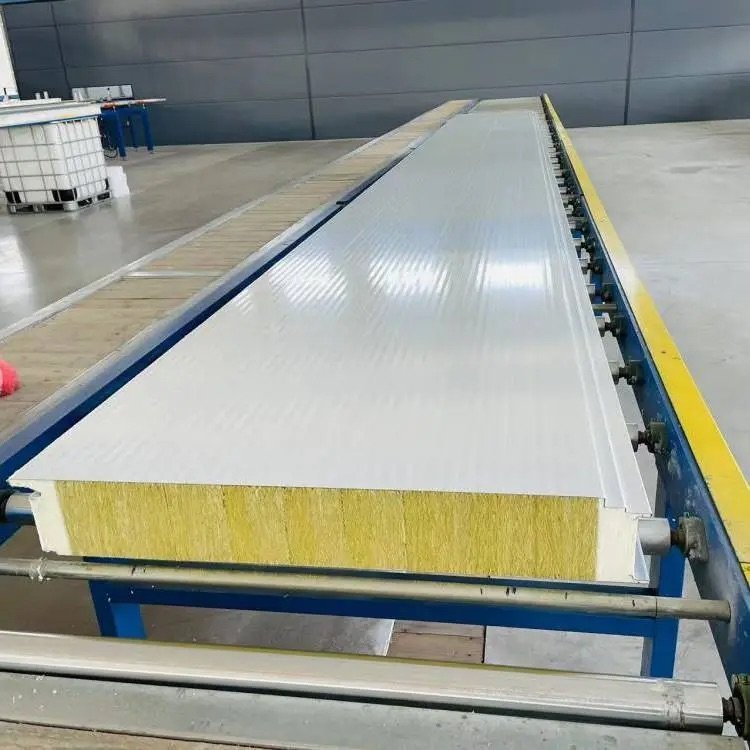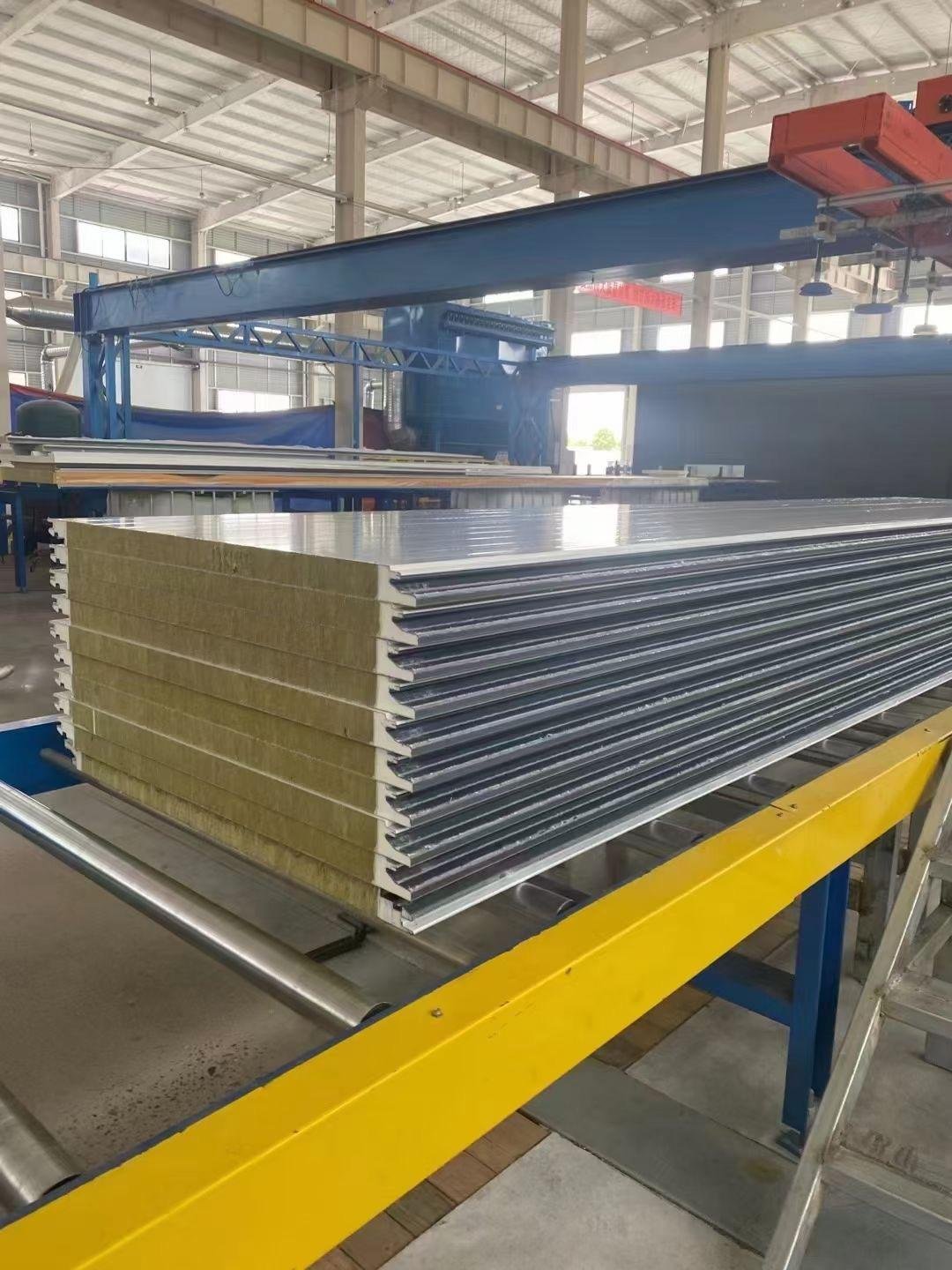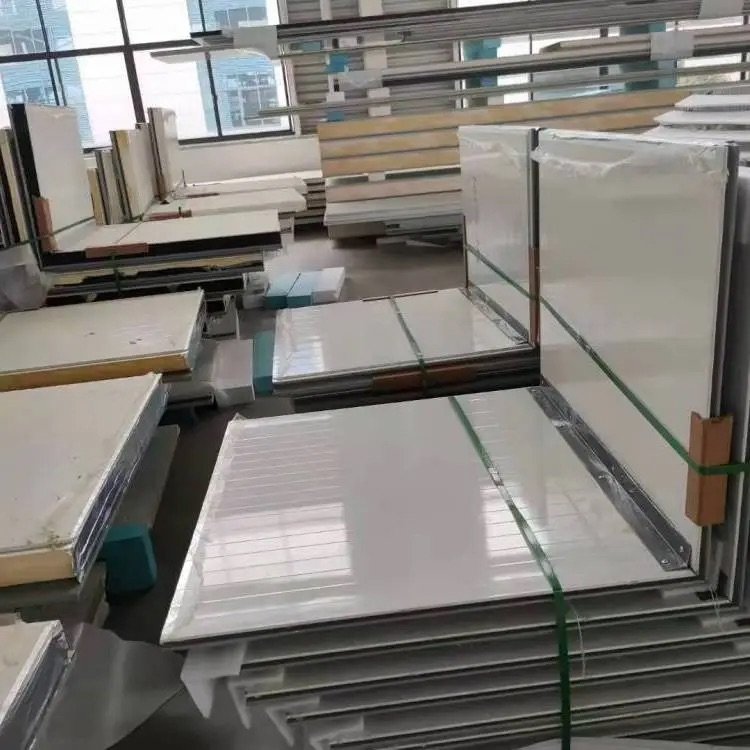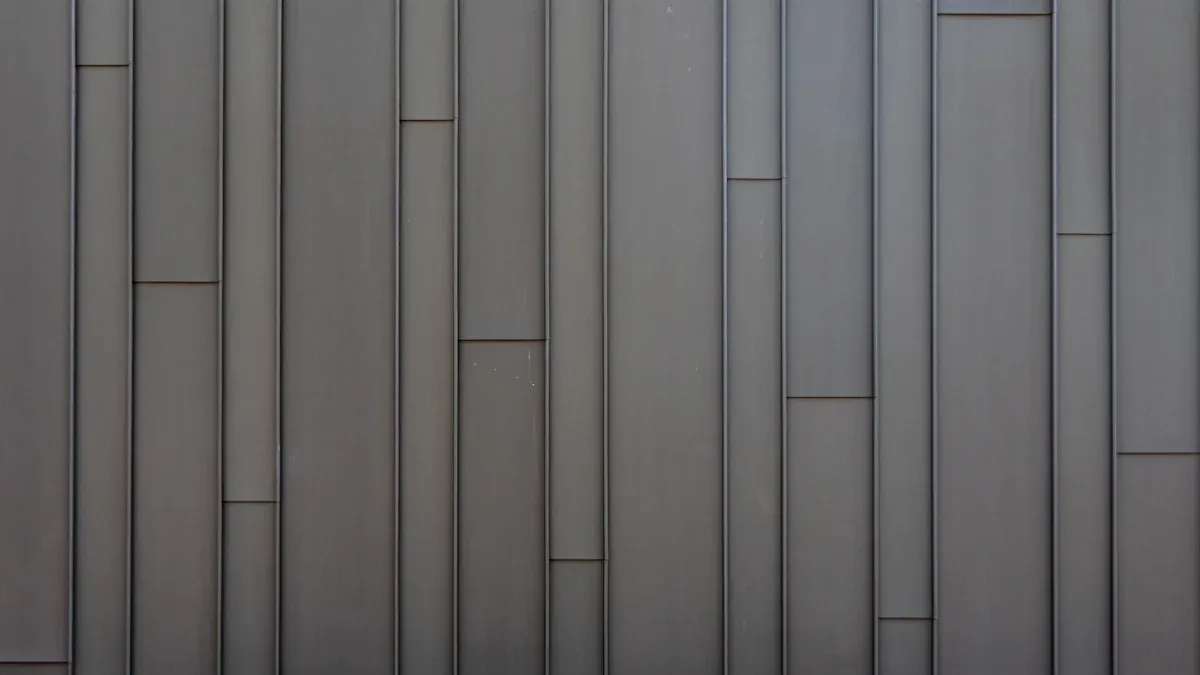
Choosing the right surface for EPS sandwich panels is important. It affects how strong, insulated, and easy to install they are. These panels are used in building because they are light and keep heat in well. But the surface material can change how good they work.
What’s the difference between PPGI, PPGL, and Aluminum?
PPGI has a zinc layer. It’s cheap and works in dry places.
PPGL has an aluminum-zinc layer. It handles heat and rust better but costs more.
Aluminum is very light and good for special building needs. It’s the priciest option.
Each material has its own benefits. Think about your project’s location and budget to pick the best one.
Key Takeaways
PPGI costs the least and works well in dry places or short projects.
PPGL handles heat and rust better, great for humid or coastal areas.
Aluminum is light and strong, best for flexible and lasting projects.
Think about your location and budget when picking PPGI, PPGL, or aluminum.
Using good materials like aluminum can cut repair and upkeep costs later.
Material Composition and Coating Differences
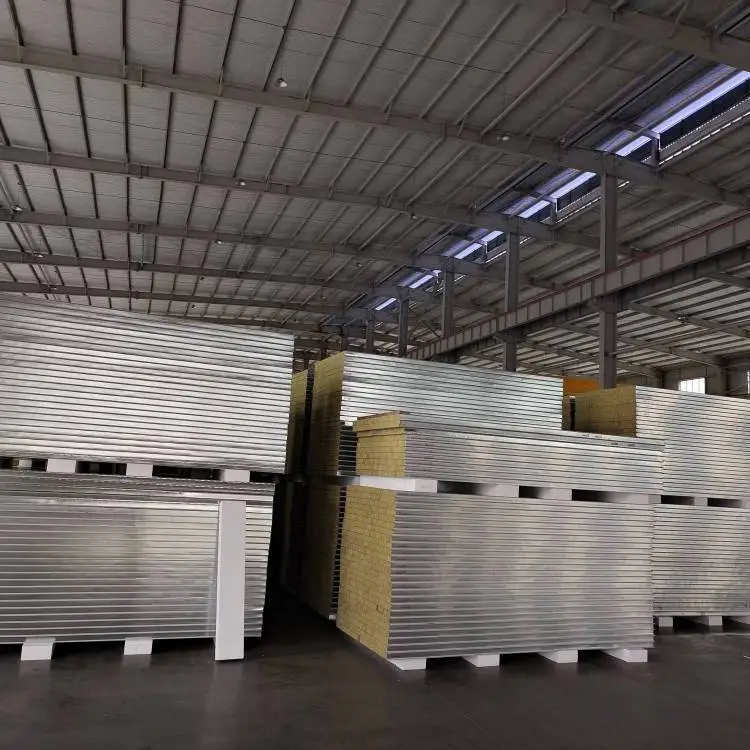
PPGI for EPS Sandwich Panels
PPGI stands for Pre-Painted Galvanized Iron. It’s a common choice for EPS panels. The steel surface has a zinc coating to stop rust. A layer of paint is added for color and smoothness.
PPGI works well in places with low moisture. It’s cheap and simple to care for. The making process gives it a clean look and strong chemical resistance. The shiny finish makes it attractive and tough against damage.
PPGL for EPS Sandwich Panels
PPGL means Pre-Painted Galvalume. It’s like PPGI but better. The steel has an aluminum-zinc coating instead of just zinc. This mix protects against heat and rust more effectively. It’s great for hot or seaside areas.
The aluminum-zinc layer helps it last longer. It fights damage from the environment, making it a solid choice for long use. Like PPGI, PPGL is smooth and easy to clean. But it performs better in tough conditions.
Aluminum as a Surface Material
Aluminum is another good option for EPS panels. It’s light but strong, perfect for projects needing less weight. Aluminum doesn’t rust and lasts a long time. It’s used in building, planes, and cars.
Here’s why aluminum is special:
It blocks noise and keeps temperatures steady.
It doesn’t catch fire, adding safety.
It bends easily for creative building designs.
Feature | Description |
|---|---|
Aluminum is lighter than other materials, making it easier to use. | |
Durability | It stays strong even in tough weather. |
Applications | Used in buildings, ships, and factories. |
If you want a high-quality and flexible choice, aluminum is a great pick.
Comparing Coating and Material Features
Picking the right surface for EPS panels is important. PPGI, PPGL, and aluminum each have special qualities. Let’s look at what makes them different.
Coating Strength
PPGI has a zinc layer to stop rust. It works well in dry places. But in tough weather, the zinc may wear off faster. PPGL has an aluminum-zinc layer. This mix fights rust and heat better. It’s great for salty air or hot areas. Aluminum doesn’t need coatings. It naturally resists rust and bad weather, making it very strong.
Surface Look
PPGI and PPGL have smooth, painted surfaces. You can pick many colors for your project. Aluminum isn’t as colorful but has a shiny, modern look. It’s great for industrial or stylish designs.
Weight and Use
Aluminum is the lightest material. It’s perfect for tall buildings or portable structures. PPGI and PPGL are heavier but still easy to use in most projects.
Eco-Friendliness
Aluminum is the best for the environment. It can be recycled and has less impact on nature. PPGI and PPGL are less green but are cheaper and widely used.
Each material has its own benefits. Think about your location, design, and budget. The right surface can make your project much better.
Performance Comparison for Color Steel Sandwich Panels
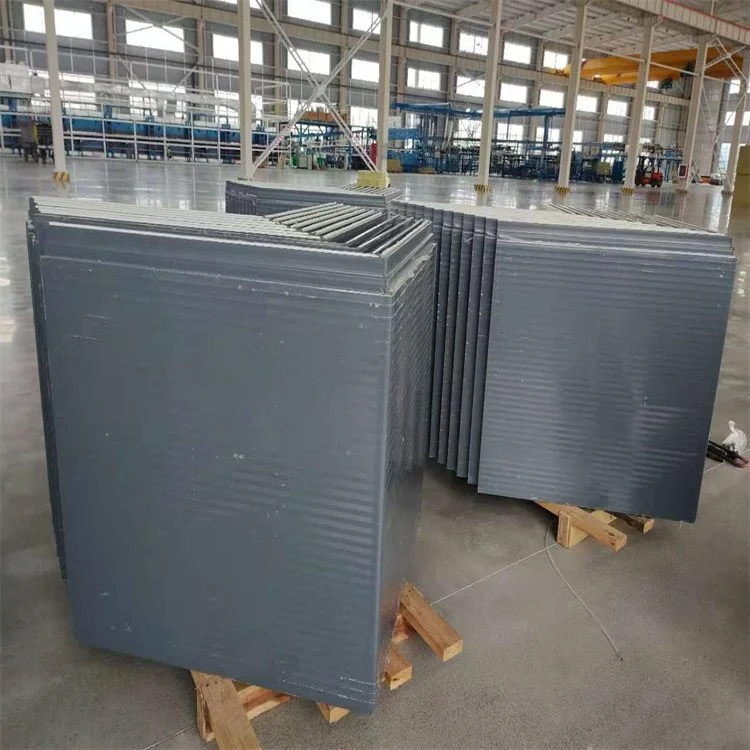
Durability and Structural Strength
Color steel sandwich panels are made to last long. PPGI and PPGL are strong because of their steel cores. PPGI works well in normal conditions. PPGL is tougher with its aluminum-zinc coating. This coating helps it stay strong in tough weather.
Aluminum panels are light but still strong. They are great for projects needing less weight. Aluminum isn’t as strong as steel but is flexible. It also resists damage over time.
Corrosion Resistance in Different Environments
Stopping rust is important, especially in wet or coastal places. PPGI resists rust in dry areas. But its zinc coating wears out faster in harsh weather. PPGL is better here. Its aluminum-zinc layer protects well in salty or humid air.
Aluminum is the best at resisting rust. It doesn’t need coatings to stay rust-free. This makes it a good choice for long-lasting use. A study by Garhwal et al. (2022) showed rust weakens panels. Picking the right material helps your panels last longer.
Heat Resistance and Thermal Performance
For hot places, PPGL and aluminum are great options. PPGL’s aluminum-zinc coating handles heat better than PPGI. This makes it good for warm climates. Aluminum is even better at dealing with heat. It reflects heat and keeps indoor spaces cooler.
PPGI is fine for mild heat but struggles in extreme heat. For the best thermal performance, aluminum is the top choice. It blocks heat and saves energy, making it popular for modern buildings.
Cost Analysis of EPS Sandwich Panel Surface Options
Initial Cost of PPGI, PPGL, and Aluminum
PPGI is the cheapest option to start with. If your budget is small, PPGI is a good pick. It works well and costs less. PPGL is a bit more expensive. Its aluminum-zinc layer makes it stronger and heat-resistant. This extra feature explains the higher price.
Aluminum costs the most of all three. It’s light, doesn’t rust, and is very flexible. These features make it a top-quality choice. If your project needs special designs or high-quality materials, aluminum is worth the cost.
Maintenance Costs and Longevity
Maintenance is important to think about. PPGI needs regular care, especially in bad weather. Its zinc layer can wear off, causing rust if ignored. PPGL lasts longer because of its aluminum-zinc coating. This means fewer repairs are needed.
Aluminum is the best for low maintenance. It doesn’t rust, so you won’t need to fix it often. This makes it perfect for long-term use. While it costs more upfront, you save money on repairs later.
Long-Term Value and Investment Considerations
Each material has its own strengths. PPGI is great for short-term or low-cost projects. It’s affordable and gets the job done. PPGL balances cost and performance. It’s a good choice for tough environments.
Aluminum gives the best value over time. It’s strong, needs little care, and lasts long. Its light weight also lowers transport and setup costs. If you’re planning for the future, aluminum is a smart choice.
Tip: Think about how long your panels will last and where they’ll be used. Spending more now can save you money later.
Application Scenarios for EPS Sandwich Panels
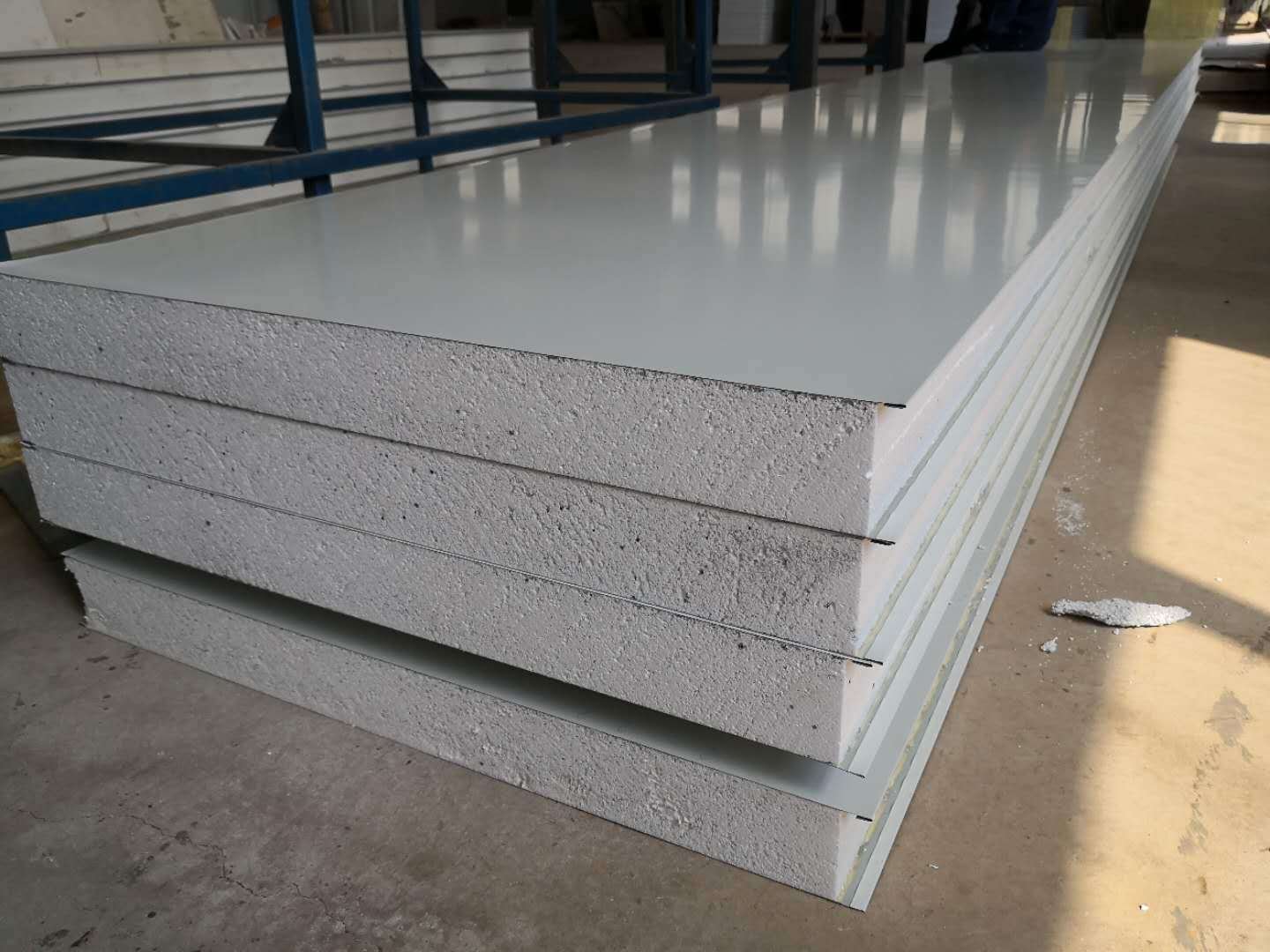
Best Uses for PPGI
PPGI panels are great for dry and mild weather areas. They work well for warehouses or storage buildings in such regions. Their smooth, painted look makes them good for shops or small offices.
These panels are also useful in prefabricated buildings. They save time during construction, which is helpful in busy cities. PPGI panels are affordable and durable enough for short-term projects or tight budgets.
Tip: Choose PPGI panels for dry areas or when saving money is key.
Best Uses for PPGL
PPGL panels are perfect for tough environments. Their aluminum-zinc coating protects in humid or coastal areas. They’re ideal for cold storage or logistics centers needing better insulation.
These panels are strong enough for disaster-prone zones. They can handle earthquakes, making them good for safer building designs. In factories, PPGL panels meet fire safety rules, making them reliable for risky places.
PPGL panels are a good mix of cost and durability. They’re great for long-term use in hot or seaside locations.
Best Uses for Aluminum
Aluminum panels are super versatile. They’re great for tall buildings, homes, and stylish designs. Their light weight makes them easy to install on high structures. Aluminum resists rust, so it’s perfect for wet or coastal areas.
In transport, aluminum is used for trains, buses, and trucks. It’s light, saving fuel. Planes and ships also use aluminum because it’s strong and handles tough conditions.
Sector | Use Cases | Benefits |
|---|---|---|
Construction | Covers for tall buildings, facades, and homes. | Good insulation, looks nice, low maintenance, easy to install. |
Transportation | Used in trains, buses, and trucks for inside and outside parts. | Light, practical, comes in many styles and finishes. |
Aviation | Used in planes for walls, floors, and ceilings. | Very light, strong, handles extreme heat or cold. |
Shipbuilding | Used in boats, yachts, and navy ships. | Light, water-resistant, rust-proof, and fire-safe. |
Signage | Used for signs, boards, and billboards. | Light, strong, handles weather, and comes in many designs. |
Aluminum panels are the best for projects needing strength and flexibility. If you want top quality and long-lasting results, pick aluminum.
Industry-Specific Recommendations
Choosing the right surface for EPS sandwich panels depends on your industry. Each material—PPGI, PPGL, and aluminum—has special features for different uses. Let’s explore them by industry.
Construction and Real Estate
For warehouses or offices, PPGI panels are budget-friendly. They look neat and work well in mild weather. In coastal or humid areas, PPGL panels are better. Their aluminum-zinc layer stops rust and lasts longer. Aluminum panels are best for fancy projects. They are light, modern, and great for stylish designs.Cold Storage and Food Processing
For places needing temperature control, PPGL panels are excellent. They resist heat and rust, making them reliable for cold storage. Aluminum panels are also a good choice. They insulate well and are easy to clean, which is important for food safety.Transportation and Aviation
Aluminum is perfect for vehicles, planes, and ships. It’s light, so it saves fuel. It also handles tough weather, making it last longer.Industrial and Manufacturing
Factories often face tough conditions. PPGL panels are strong and resist heat, rust, and wear. Aluminum panels are useful for special equipment or fire-safe areas.
By knowing your industry’s needs, you can pick the best material. This helps your project stay affordable and last a long time.
Practical Advice for Choosing the Right Surface Material

Key Factors to Consider for EPS Sandwich Panels
Picking the right surface for EPS sandwich panels depends on many things. First, think about where the panels will be used. If your project is near the coast, PPGL or aluminum are better because they don’t rust. In dry areas, PPGI is cheaper and works well.
Next, check the fireproof level and waterproofing of the material. Aluminum is great for stopping fires and keeping water out. This makes it perfect for safety-focused projects. PPGL balances these features, while PPGI works for simpler needs.
Also, look at how thick the panels are. Thicker panels keep heat in and block noise better. The table below shows how thickness changes key features:
Panel Weight (Kg) | Thermal Resistance (W/m2 0C) | Average Sound Insulation (db) | Max. Span At Load 50kg/m2 | |
|---|---|---|---|---|
50 | 10.44 | 0.663 | 20 | 3.9 |
100 | 11.79 | 0.33 | 23 | 9.5 |
200 | 13.59 | 0.166 | 26.5 | 4.3 |
Assessing Material Quality and Supplier Reliability
Not all materials are the same, so check their quality. Good panels should resist impacts and bend without breaking. For example, strong panels have an impact resistance over 5mm and bending capacity of 1.5mm.
Suppliers matter too. Pick ones with a good history of selling reliable materials. Make sure they offer certifications for fireproofing, insulation, and other benefits. Trustworthy suppliers share details like moisture levels and shrinkage rates to help you choose wisely.
Balancing Cost, Performance, and Project Needs
Finding the right balance between cost and performance is important. PPGI is the cheapest option, making it good for short-term or low-budget projects. PPGL costs more but lasts longer and insulates better. Aluminum is the priciest but offers the best fireproofing and waterproofing.
Think about your project’s future goals. If you want top certifications like LEED Platinum, spending more on PPGL or aluminum is worth it. These materials meet strict environmental rules and last longer.
Tip: Spending more now can save money later. High-quality materials need less fixing and last longer.

Picking the right surface for your EPS sandwich panel is key. PPGI is cheap and good for dry places. PPGL lasts longer and works in tough areas like coasts. Aluminum is light, rust-free, and high-quality, great for special uses.
Consider your project’s location, budget, and future needs. Do you want something affordable or long-lasting? Always check the material’s quality to fit your project. Planning ahead can save both time and money later.
FAQ
What is the best surface material for coastal areas?
For coastal areas, PPGL and aluminum are great choices. PPGL has an aluminum-zinc coating that stops rust in salty air. Aluminum doesn’t rust and lasts a long time near the sea.
Tip: Pick aluminum if you want something strong and easy to maintain.
Can I use PPGI panels in hot climates?
PPGI works okay in mild heat but not in extreme heat. For very hot places, PPGL or aluminum is better. They handle heat well and keep spaces cooler.
Note: Always think about the weather before picking your panel material.
Are aluminum panels worth the higher cost?
Yes, aluminum panels are strong, don’t rust, and are flexible. They need little care and last a long time, saving money later. If you want top quality, aluminum is worth the price.
How do I choose the right panel thickness?
Thicker panels keep heat in and block noise better. For example, a 100mm panel insulates more than a 50mm one. Pick the thickness based on how much insulation your project needs.
Tip: Use thicker panels for cold storage or quiet spaces.
Which material is the most eco-friendly?
Aluminum is the best for the environment. It can be recycled and is better for nature than PPGI or PPGL. If you care about being green, choose aluminum.
♻️ Eco Tip: Use aluminum to make your project more eco-friendly.

